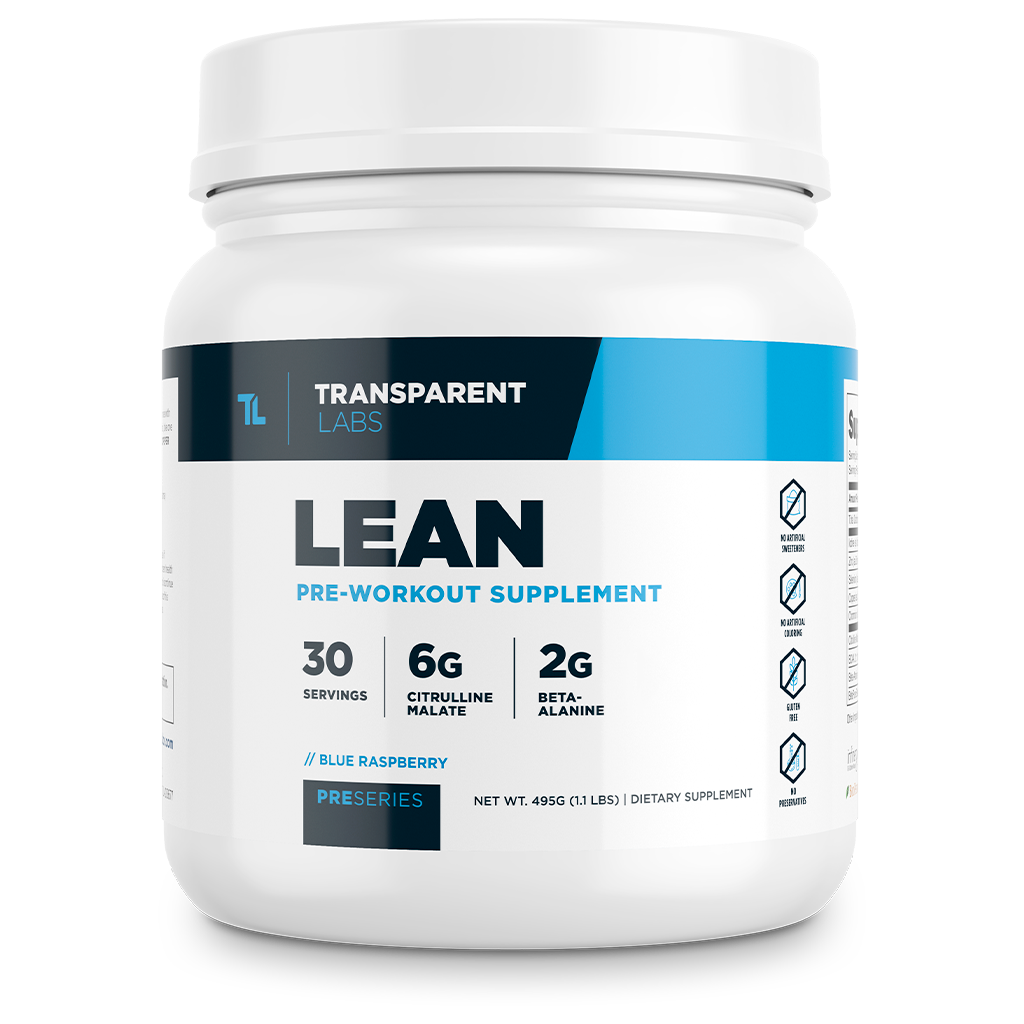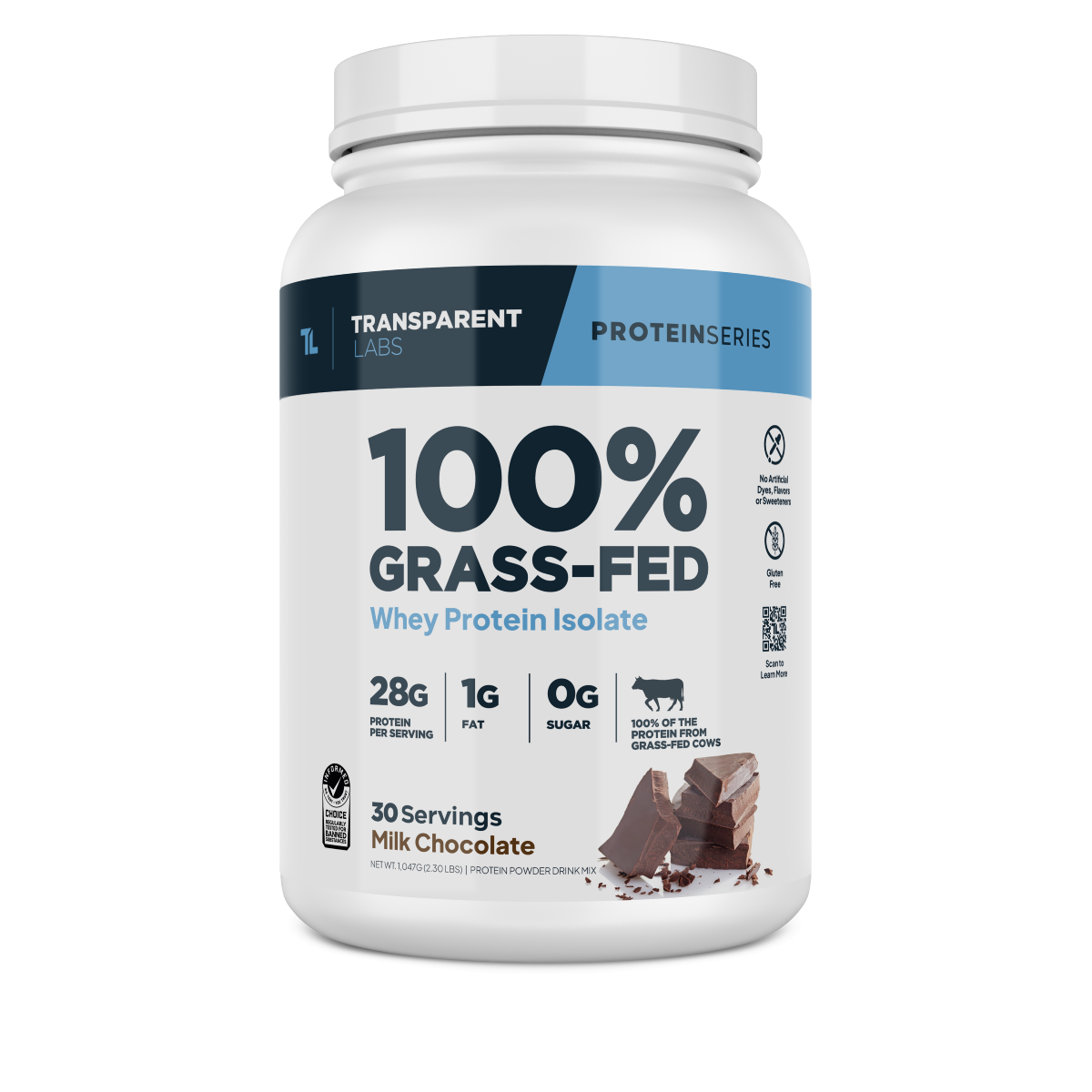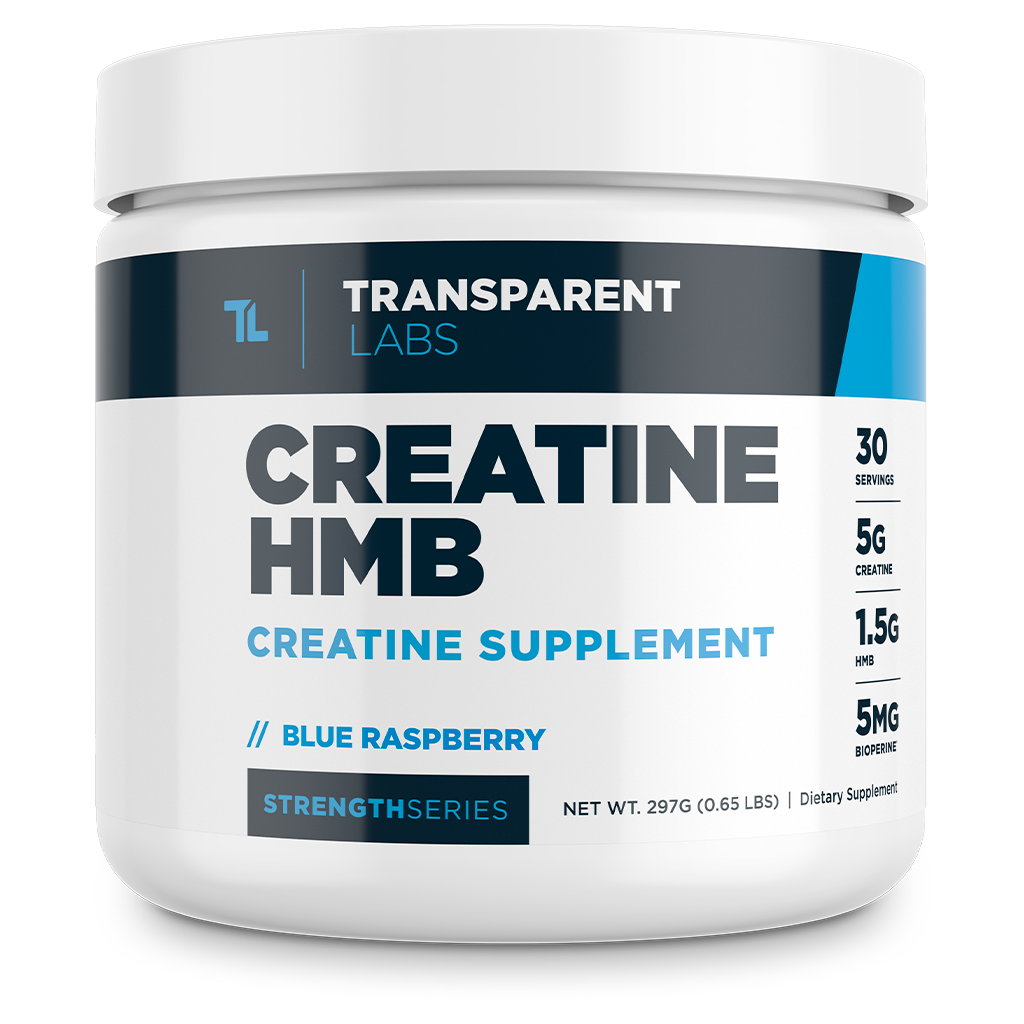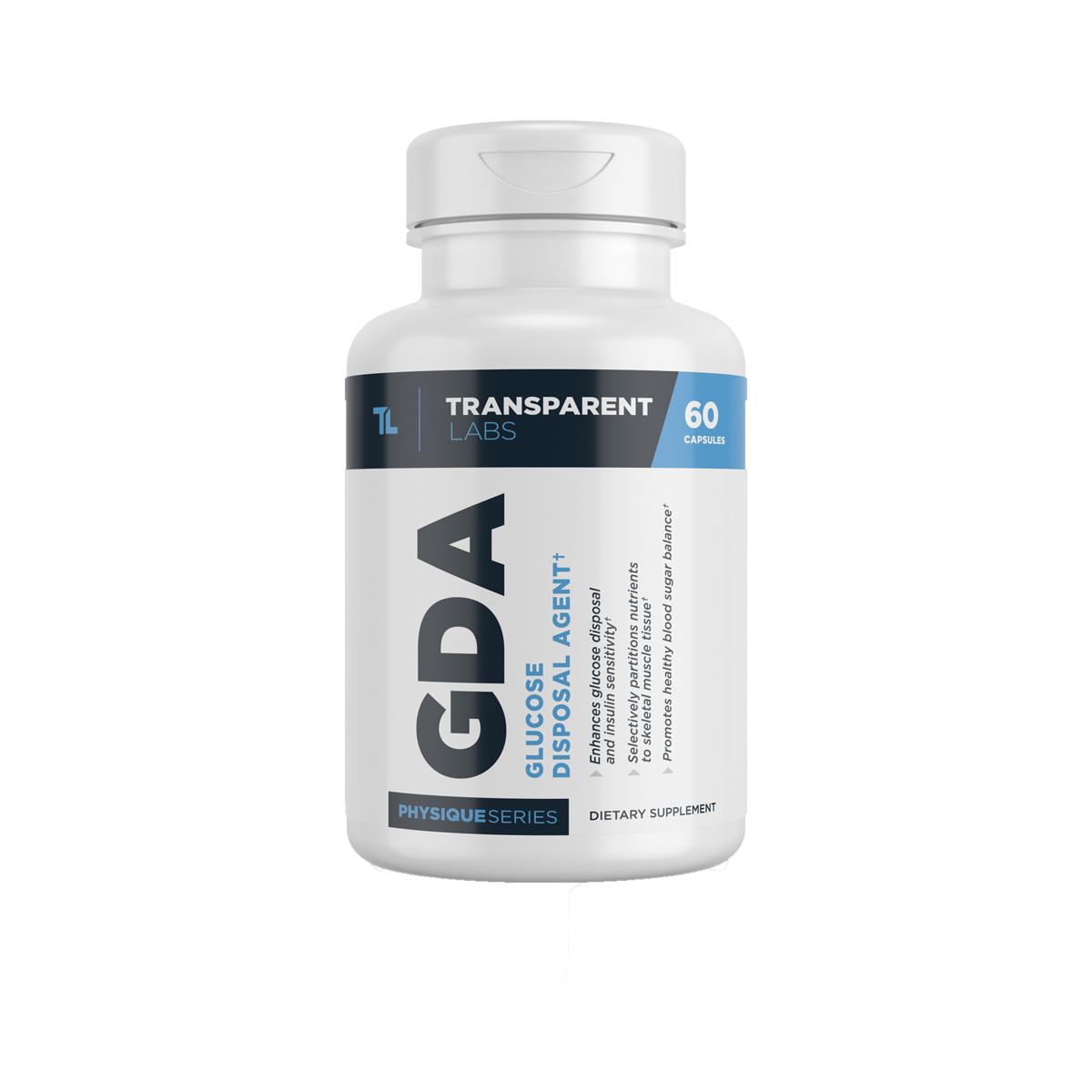Macros For Building Muscle

When it comes to building muscle, your macronutrients need to be dialed in to maximize the efficiency of muscle growth.
Macronutrients (commonly referred to as “macros”) are the 3 most prominent numbers on the back of any nutrition facts panel. They are comprised of carbohydrates, fats, and most importantly for building muscle - protein.
So what exactly do they mean for your physique?
Here we're going to quickly cover macronutrients so that this stealthy and often overlooked elephant in the room stops hindering your gains.
Do Calories Matter When Tracking Macros?
Absolutely. No matter what you have heard, calories do matter.
- If you are in a calorie surplus, you are gaining weight.
- If you are in a calorie deficit, you are losing weight.
Plain and simple, no ifs, ands, or buts.
The hard part is calculating your total daily energy expenditure (TDEE) in order to determine the amount of calories required for a surplus or deficit. We recommend using an online calorie and macro calculator to find out your recommended caloric intake (although beware of most macro calculators - they tend to under dose protein). This is a detailed formula based on your age, gender, height, weight, body composition, lifestyle habits, and exercise. [1][2][3]
Our own custom TL calorie and macro calculator is coming soon, but in the meantime we recommend the old school formulas listed further down.
Believe it or not, your resting metabolic rate RMR (or what most people casually refer to as metabolism), does not vary that much when all variables (listed above) are held constant.
What changes your RMR most is your body composition. The more muscle you have, the higher your RMR will be (holding all other variables constant).
Whether you are cutting fat, or working to gain muscle, your calories change, but your protein intake does not. This is a unique outlook, but the data on protein requirements backs this up.
The macro nutrients we are going to change most often is carbohydrates and fat, in order to hit your calorie goals.
Protein is needed for muscle growth, but it has also been shown in studies to accelerate fat loss, especially when protein is increased while holding total daily calories constant. [4]

Can You Cut Fat and Burn Muscle at the Same Time?
This is a highly debated topic. The short answer is yes. HOWEVER, it is substantially less efficient than doing a bulk or a cutting diet where one goal is the isolated focus. Let’s briefly dig in to why…
In order to increase muscle, you need to fuel your muscle with nutrients. Muscle growth is optimized with overall growth. Being in a calorie surplus will ensure your muscles are not without the needed nutrients for growth, and to limit muscle wasting.
In order to lose weight, you need to lose overall mass. You cannot lose overall mass if you have more calories coming in than are going out.
This is why advanced athletes usually are in one of the two diets at all times. It is the most aggressive way to build impressive physiques, even if they only last for a short period of time (have you heard of being “competition ready” … it’s not a sustainable state).
However, there are exceptions, especially for average day to day people. It comes down to timing, balance between cardio and weight lifting, and the glorious macronutrient - protein.
If you are getting enough protein (about 1g per pound of body weight) you limit muscle wasting while also ensuring sufficient protein for muscle growth. This number (±10%) seems to hold true in every study we’ve read. We see no reason to set the amount below 1g per pound of body weight, in either cutting diets or bulking diets.
NOTE: Beginners can, and often do, gain muscle and lose weight fast, for a short period of time (<6 months of active lifting). [5][6]

Macro Ratios
The ratio of protein, carbohydrates, and fats needed for building muscle do not vary that much. We focus less on a percentage split (besides fats), and more on hitting the required daily minimum of protein - 1 gram of protein per pound of body weight.
The equation would be Total Calories = (1g protein x body weight x 4) + (1g fat x .25 calories x 9) + (Carbohydrates x 4).
Once you know your daily calories, you simply solve for carbohydrate, since it is the only unknown variable in the equation.
NOTE: proteins and carbohydrates = 4 calories per gram, and fats are 9 calories per gram.
For Lightweights and Hard Gainers

As someone looking to gain weight and muscle mass, we set our protein to 1 gram per pound of body weight and adjust carbs and fats accordingly.
Carbohydrates will increase disproportionately higher than fats (since fats are kept at, or close to, 25%).
This diet will have the highest growth rate of muscle mass, as being in a calorie surplus provides more growth and nutrients to the muscles.
For rapid muscle growth, carbohydrates play a critical role, as well as for fueling aggressive workouts and supporting testosterone. https://www.ncbi.nlm.nih.gov/pubmed/3573976
In regard to workouts, for optimal muscle growth, lift heavy. This will shock load the muscle and signal growth messaging, substantially more than light weight high reps.
Losing Weight While Building Muscle
In order to still build muscle while in a calorie deficit and burning body fat, it is best to maintain no more than a 20% calorie deficit. Anymore could result in unwanted muscle waisting.
The key is to lift heavy, consume a steady amount of protein, and eat low calories. Lifting heavy results in signaling from the body for muscle protein synthesis, the protein feeds the muscles, while the body burns fat for fuel. [7]
NOTE: Some elite athletes, usually below 5% body fat with already conditioned muscles, may not be able to build muscle while still in a calorie deficit.

How to Track Muscle Gain
The obvious way to track your progress in building muscle is to look in the mirror. Most of us just want our bodies to look better, our proportions to change, and new definition in the glory zones like abs, arms, and chest.
Muscle mass increase (or decrease in some unfortunate situations) is tracked in science is a bit more… scientific. They have a metric called "fat free mass" which tracks your gains minus fat. This is usually the best metric for tracking muscle gain.
You can track your gains in "fat free mass" by tracking total body weight in relation to body fat percentage. There are 3 common ways of tracking body fat percentage. Hydrostatic (expensive and involves full body dunking), handheld electronic bio-impedance devices (most inaccurate, but better than nothing), and skin calipers. Our favorite is skin calipers, because it's cheap, accurate, and can be used over and over again.
Body Weight - (body weight x fat percentage) = Fat Free Mass.
Affordable Protein
As you by now have figured out, protein is the key macro nutrient for building muscle.
The following chart is a quick reference to good protein sources and their affordability per gram. Cooking a home cooked meal or consuming a high protein low carb 100% Grass Fed Whey Protein Isolate shake is an incredibly affordable way to hit your proper macro numbers.
|
Healthy PROTEIN Source |
Price Per Gram of Protein |
| Lean Steak | $0.067 |
| Pork | $0.039 |
| Grilled Chicken | $0.033 |
| 12 Piece Chick-Fil-a Grilled | $0.168 |
| Chipotle Steak Salad | $0.270 |
| Wendy's Grilled Chicken Wrap | $0.189 |
| KFC Kentucky Grilled Chicken Breast with Green Beans | $0.142 |
| Subway Turkey Sandwich Foot Long | $0.233 |
| Almonds (high fat) | $0.063 |
| Eggs (high fat) (double the price for organic) | $0.042 |
| Broccoli | $0.139 |
| Transparent Labs Isolate | $0.063 |
| Transparent Labs Isolate (3 pack) | $0.049 |
Grilled chicken breast and pork came out to the cheapest, followed closely behind by our Transparent Labs 100% Grass Fed Whey Protein Isolate.
For optimal muscle building, whether you are looking to cut or gain weight, be sure to hit your 1 gram of protein per pound of body weight.
Wrapping it all up
Overall, our food choices and macronutrient intake dictate physique progress more than most people realize. Yes, it certainly is easy to overlook them. After all, we are emotional eaters. But, if you understand your body's macronutrient needs, then you can more effectively plan for the future, and meet your goals.
As Archilochus once said "we do not rise to the level of our expectations, we fall to the level of our training."
While you plan, we'll continue to provide high quality protein powders to make meeting your macros easier and more effective.
Helpful Links
FREE Calorie and Macro Calculator
Transparent Labs Ultra Clean Protein (get $10 off by using coupon code MBM10OFF at checkout)




